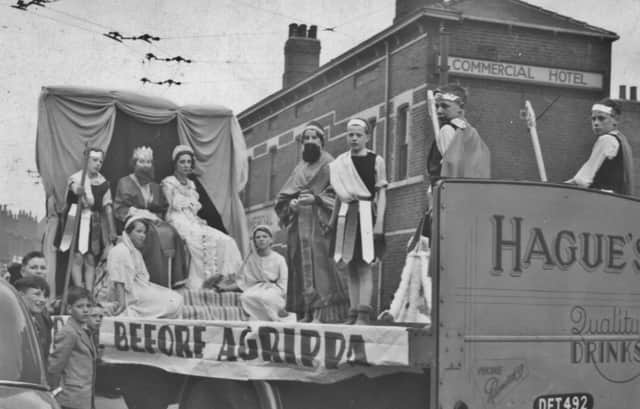HISTORY FEATURE: When thousands gathered to watch the Whit parade


The origin of the annual event is difficult to pin down but it may have started early in the latter half of the 19th century, linked with the Band of Hope galas which promoted the anti-alcohol Temperance movement.
Press reports from the 1860s give a glimpse of how popular these galas were.
Advertisement
Hide AdAdvertisement
Hide AdTo celebrate, crowds would meet up in the grounds of Parkgate House, which was a large house in the middle of the Park Gate ironworks, surrounded by delightful gardens.
News reports from the 1860s show that Parkgate’s Temperance galas were a major deal. Tea was enjoyed by hundreds of people at Temperance Hall, which stood where the miners’ institute is today.
Into the 20th century, the starting points for the parade of children were on Greasbrough Road and Aldwarke Road, close to Four Lane Ends.
Youngsters from all the local chapels — some from as far away as Nether Haugh — would take part, gathering together to walk up Broad Street and Rawmarsh Hill to Rosehill Park.
Advertisement
Hide AdAdvertisement
Hide AdThe children wore their best clothes — often, they would have a new outfit just for the occasion (and which might be returned or pawned very soon after!)
White dresses were popular among the girls, who carried flowers and were led by each individual chapel’s May queen.
Some of the chapels would present religious tableaux on the backs of trucks and lorries, making the parades even more eye-catching.
Each group was preceded by a banner.
Flowered maypoles were included in the parade.
And prizes were awarded for the best float and tableau.
Tony Dodsworth, chairman of Rawmarsh & Parkgate Local History Group, said: “When talking with older residents about Rawmarsh and Parkgate in the past, it’s amazing how often three particular memories crop up: going to Robbie’s picture house, shopping at Schonhut’s butchers and taking part in the Whit parades.
Advertisement
Hide AdAdvertisement
Hide Ad“Many remember just how big an occasion the Whit Monday parade was with hundreds of children and young adults taking part and watched by thousands of local people and visitors.
“The early history of the parades locally is difficult to pin down but they may have started early in the second half of the 19th century linked with Band of Hope galas that promoted Temperance.”
Parades for Whit Sunday were to celebrate Pentecost, marking the descent of the Holy Spirit on Jesus’ disciples on the seventh Sunday after Easter.
Joan Pearce — once a May queen for the Rawmarsh Congregational Church in the 1930s — could remember over 60 years later how spectators on Rawmarsh Hill would gamble on who the award winners would be. She recalled hearing cries of the odds — “three-to-one the Congs” — ringing out up the hill.
Advertisement
Hide AdAdvertisement
Hide AdNellie Schofield remembered walking up from the chapel in Lloyd Street, Parkgate, holding a string from the maypole with coloured paper flowers on it as decoration.
Twelve girls each held a string. They paraded up Rawmarsh Hill singing hymns and congregated around the bandstand in the park for more singing.
“After the singing we had our teas there,” she said. “Each Sunday school had a little bit of the park allocated to them and Lakes, the milk people, used to lend us their lorry and the younger children rode in it.”
Malcolm Brown recalled the increasingly loud beating of the drums as the procession made its way slowly to the park and the efforts made by the boys spectating to get their pals in the tableaux to laugh.
Advertisement
Hide AdAdvertisement
Hide AdPeter Atkinson, from Bradbury Farm, often provided a tractor and trailer to carry some of the younger children from Ryecroft Methodist Chapel to the park.
The heyday of the parades was perhaps reached in the 1950s, with numbers dwindling in the following decade and the event being discontinued in the early 1970s — until now.
The parade will be resurrected on Friday, June 16, as part of the Parkgate200 anniversary celebrations.
Organisers hope to capture some of the atmosphere which made the events so popular in the past, although this time the proceedings will be kept within Rosehill Park because of safety concerns around the traffic on the main road.